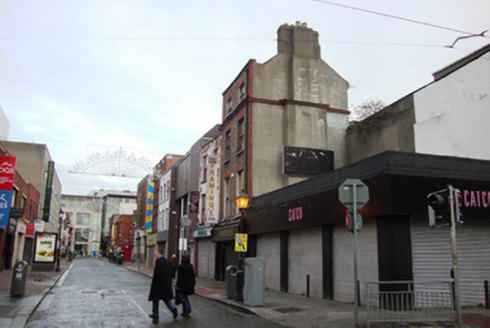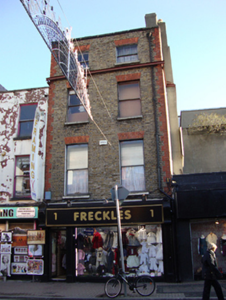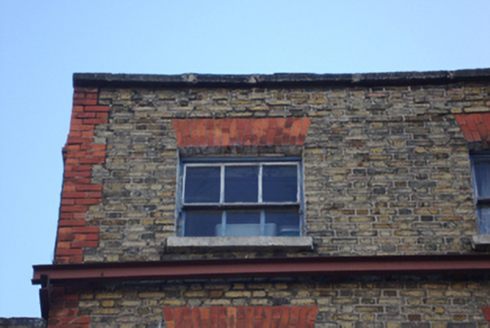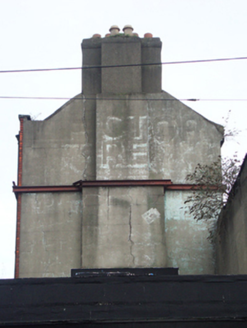Survey Data
Reg No
50010468
Rating
Regional
Categories of Special Interest
Architectural
Original Use
House
In Use As
Shop/retail outlet
Date
1770 - 1790
Coordinates
315674, 234479
Date Recorded
07/12/2011
Date Updated
--/--/--
Description
Attached two-bay four-storey house, built c.1780, now in use as clothes shop, with recent timber shopfront to ground floor. Pitched roof hidden behind parapet wall having granite coping, cement rendered chimneystack with terracotta pots to south, yellow and red brick chimney stack on party wall with no. 2 to north. Cast-iron hopper with replacement uPVC downpipes to south of west elevation breaking through parapet. Yellow brick walls to front elevation laid in Flemish bond, having red brick block-and-start quoins and steel band reinforcing and encircling building between top two floors. Gauged red brick lintels to square-headed window openings having brick reveal to second floor and painted reveals to third and first floors and painted granite sills to all upper floors. Three-over-three pane timber sliding sash windows with ogee horns to third floor and single-pane to other upper floors, having ogee horns. Ruled-and-lined cement rendered south elevation having faint block lettering 'Hector Grey' to top floor, and single-storey extension to south.
Appraisal
No.1 Liffey Street Upper retains an attractive yellow brick east elevation, with machine-made red brick detailing. The parapet is significantly higher than its three-storey neighbour to the north. The facade is made interesting by the variations in brick colours. The carved shopfront, while recent, complements the structure and street as a whole, while the building’s historic character is reflected in the timber sash windows. Liffey Street Upper was developed by Humphrey Jervis (1630-1707) in the area around Saint Mary’s Abbey, after 1674. The Jervis Estate developed a network of streets arranged in a nine-square grid, including Jervis Street, Stafford Street (now Wolfe Tone Street) and Capel Street, as well as building Essex Bridge. Liffey Street Upper was occupied mainly by furniture brokers in the mid-nineteenth century, and today it is a shopping street, with many three-storey eighteenth-century houses converted into shops. An early eighteenth-century street, it was mostly rebuilt in the last decades of the nineteenth century.







